Easy Yoga Poses to Relieve Stress & Relax
0Delicious Living sat down with yoga teacher Heather Peterson, SVP of Programming for CorePower Yoga, to learn her top five yoga poses for stressful, anxiety-ridden days. Relieve tension with these easy poses at work, home, on the road, or at the gym.
Note: Here is the link to the original article on Delicious Living:
While “feeling stressed” holds a negative connotation, some stress is actually good stress. This is known as eustress.
If your neighbor’s mean dog starts chasing you, for example, your body releases hormones like adrenaline to help you run away. This type of brief, acute stress helps you manage potentially dangerous situations.
It’s the long-term, chronic stress that is linked to dangerous diseases like high blood pressure, obesity, and diabetes.
The following simple yoga poses, suitable for novice yogis, aid in targeted stress relief. “These are amazing poses for calming the mind and helping reboot the immune and nervous systems, which are the key functions in relieving stress,” says Heather Peterson, SVP of Programming for CorePower and yoga instructor. “You don’t need to have any Jedi Master yoga skills—these poses are wonderful for beginners.”
Yoga can put your body and nervous system back into the parasympathetic state of being, where healing occurs.
This is known as The Relaxation Response, and is the opposite of the stress response and what is known as the sympathetic state or Fight or Flight.
While the following poses can be performed one after another, you can do any pose whenever you’re feeling especially anxious. Try holding each pose for 30 seconds or up to two minutes, breathing deeply throughout the duration of the pose.
Child’s Pose
Cues: Kneel on the floor and touch your big toes behind you, allowing your knees to sit wider than your hips. Lay your torso over your knees and extend your arms forward, palms down. Rest your forehead onto your mat.
Benefit: “We round over computers, children, or groceries all day, and the spine gets an asymmetric compression” says Peterson. In this resting pose, you are lengthening your spine and stretching your hips.
Downward Facing Dog
Cues: From your hands and knees, on an exhale, weight your palms and extend your pelvis back and up, reaching your heels toward the ground to form an upside-down “V”. Activate your arms like you are trying to push the floor away from you. Try bending your knees to lengthen your sit bones toward the ceiling even more for greater stretch.
Benefits: “This gentle inversion is a great way to cleanse the palate of the mind,” says Peterson. Because stress often worsens lower back pain, Downward Facing Dog stretches the entire back-line of the body and your shoulders. Plus, lowering your gaze helps quiet your mind.
Bridge Pose
Cues: Lie on your back with your knees bent, feet flat on the floor, and palms down (you should be able to reach your heels with your hands; if not, scoot your feet a bit closer to your pelvis). On an exhale, press your feet and arms into the floor and lift your hips toward the ceiling. Keep your feet and knees parallel, and continue to gaze toward your belly button.
Benefits: In addition to opening your hip flexors, Peterson says this slight inversion “also helps activate your lymphatic system,” your circulatory system that transports white blood cells throughout your body—a boon if chronic stress has weakened immunity.
Leg Up The Wall Pose
Cues: Sit next to a wall with your legs straight out in front of you. Lie gently onto your back and engage your core to lift your legs onto the wall, with the bottoms of your feet facing toward the ceiling and the backs of your legs grazing the wall. Place your palms out to the side for support. Release your head and neck onto the floor, breathing deeply throughout the duration of the pose. Try holding Legs Up The Wall for 2 to 5 minutes; if your legs start tingling, move out of the pose.
Benefits: “This pose is fantastic for people who have jobs that require being on your feet,” says Peterson. This moderate inversion promotes total body relaxation because it activates the parasympathetic nervous system, which slows your heart-rate and stimulates digestion.
Supine Spinal Twist Pose
Cues: Lay on your back with yours arms in a “T” shape and your knees bent, with your feet flat on the floor. Drape your knees over to one side, gazing toward the opposite way. Keep both shoulders rooted to the ground. Repeat on the other side.
Benefits: “A twist is magnificent to reset digestion and elimination,” says Peterson. Grounding and gentle, Supine Spinal Twist is especially stress relieving if you sit all day, as it releases lower back tenderness. “It also cleanses internal organs to minimize immune burden and relieves muscles along the spine to provide deep relaxation,” Peterson continues.
Remember: It’s a good idea to talk to your healthcare practitioner before starting any new exercise plan. And if you have any injuries, it’s important to practice yoga under the guidance of a certified yoga instructor.
Images: Thinkstock
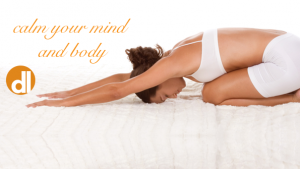
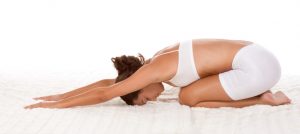
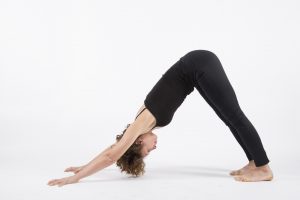
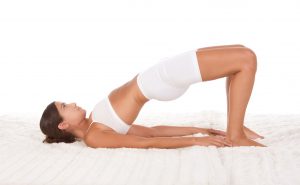
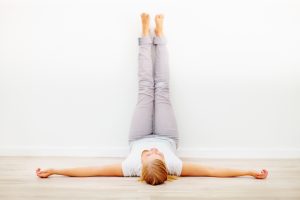
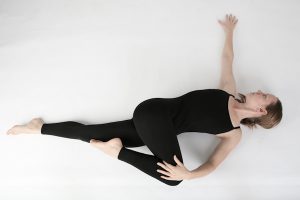


Comments